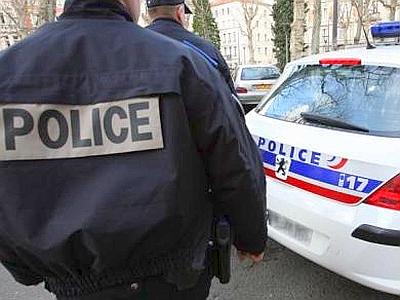The host city of Katowice is in the center of Silesia, a region that is home to about 90,000 coal workers — around half of all the coal workers in the EU.
Coal is hugely important for Poland. Prime Minister Mateusz Morawiecki recently referred to it as “our black gold.”
The country is the biggest producer of hard coal in the EU and coal power provides about 80% of Poland’s electricity compared to an average of 30% among International Energy Agency member countries.
But coal accounts for almost half of global energy-related CO2 emissions, and like other coal-dependent countries, Poland is trying to adapt to a world that needs to cut emissions to slow global warming.
The EU has pledged to cut greenhouse gas emissions by at least 40% percent compared to 1990 levels by 2030, and last week unveiled a plan to be net zero by 2050. Poland’s CO2 emissions per capita are slightly above the EU average, but its emissions per GDP are third-highest in the EU.
But there are signs that is changing.
Marek Wąsiński, an analyst at the Polish Institute of International Affairs, a government-funded think tank, told CNN: “Like other EU countries, Poland is also moving away from coal. It’s not a revolution, it’s a slow evolution of the energy sector.”
Although it makes up less than 10% of its energy mix, Poland has around 6,000 megawatts of wind power capacity, putting it among the leading nations in the EU.
Construction of the Baltic Pipe Project is set to start in 2020, which will supply natural gas from Norway to Poland. Natural gas produces much less CO2 than coal when it’s burned for energy, but methane leakage can limit its climate benefits.
The Ministry of Energy’s draft energy policy, published last week, said that by 2030, 60% of power will come from coal. It expects to have up to 9,000 MW of nuclear power by 2043, and 30,000 MW of off-shore wind and solar power by 2040.
Coal legacy
Michał Kurtyka, COP 24 President and Secretary of State in the Ministry of Environment, told CNN that Poland inherited a legacy of coal from its decades in the Eastern Bloc — which ended in 1989 — but had since managed to successfully transition its economy.
“In 1990 the Polish energy mix was 96% coal,” he said. “There was a very high share of employment in coal and very big industrial production, the result of this communist conviction that only through industrialization could the Soviet Bloc compete with Western economies.
“When we entered into the transformation phase, this idea of transition of employment and changing industrial structure in many industrial regions, but starting with Silesia, was a very big challenge, but it’s working very well right now.
“Katowice is an example of the transformation. It’s a green city, 40% of the city is covered with parks, and quite a substantial part of production and employment is going to IT, business centers, value-added services, and new industries.”
But the move away from coal isn’t happening fast enough for some environmental groups.
Client Earth is a charity that uses legal avenues to protect the environment.
“The government targets are not in line with the Paris Agreement,” Client Earth’s Ilona Jędrasik told CNN. “To have so much electricity still come from coal by 2040 is impossible from an economic point of view. By then renewables will be way cheaper than coal — keeping coal at that point makes no sense.”
Economics is another argument against Polish coal.
Rapidly rising carbon prices in the EU are making coal power increasingly expensive. Poland’s coal sector struggles to make a profit and many power plants are nearing the end of their lifespans.
Last month, Client Earth launched a lawsuit against the construction of the long-proposed 1,000 MW Ostrołęka C coal power station in northern Poland — a joint venture between power companies Enea and Energa.
But it didn’t bring the lawsuit on environmental grounds; instead, as a minority shareholder in Enea, Client Earth argues that the power company has failed to manage material climate-related financial risk associated with the project.
“We are arguing that it’s not economically profitable because of the rising prices of CO2 emissions, and there is a legal risk of this kind of investment also when it comes to climate policy and climate regulations at an EU level,” said Jędrasik.
Enea and Energa didn’t respond to repeated requests from CNN to comment, but Energa President Arkadiusz Siwko said in July that the power plant “contributes to the process of modernizing national power sector … and, what is important, will be fired with Polish coal.” He added that it would provide “a satisfactory rate of return for our shareholders.”
The mayor of Ostrołęka said the power plant would provide jobs for the city.
‘Just transition’
It’s with an eye on the 90,000 Polish jobs in the coal sector that the Polish government has drafted the Silesia Declaration on Solidarity and Just Transition, which heads of state will be asked to adopt at the opening of COP24.
The declaration “is dedicated to ensuring a fair and solidarity-based transformation that will help to protect the climate while maintaining economic development and jobs.”
Kurtyka says Poland must look for opportunities to create jobs at the same time as tackling climate change.
“There are technologies that provide not only environment and climate benefits but also social and industrial benefits,” he said. “For example there’s a growing industry in Poland around electro mobility and batteries, especially in Silesia.
“The message is that we want to operate this transition together with people and not against them.”












Leave a Reply